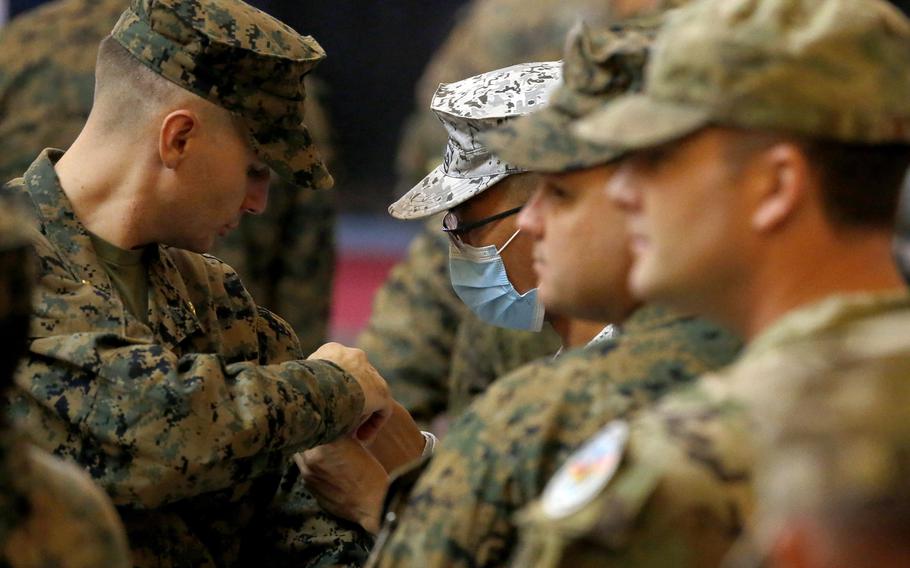
U.S. and Filipino troops attend the Balikatan exercise's opening ceremony at Camp Aguinaldo in Quezon city, northeast of Manila, Tuesday, April 11, 2023. (Bullit Marquez/For Stars and Stripes)
The United States and the Philippines have kicked off a large-scale exercise that will include maneuvers by 17,600 troops, live-fire missile launches and a boat-sinking drill near disputed South China Sea waters the day after China wrapped up its own military exercise near Taiwan.
Balikatan, a Tagalog word for “shoulder-to-shoulder,” began Tuesday and concludes April 28, according to a Balikatan 23 statement April 4.
During the exercise, 5,400 Filipinos and 12,200 Americans will practice maritime security, amphibious operations, live-fire, urban and aviation operations, cyber defense, counterterrorism and humanitarian assistance and disaster relief across the Philippines, the statement said.
Filipino troops participating in the drills come from the Northern Luzon and Western commands, and include around 1,040 marines, 1,410 soldiers, 450 sailors, 1,180 airmen and 710 special operators, U.S. Marine Maj. George McArthur, a Balikatan spokesman, said Thursday in an email to Stars and Stripes.
Balikatan begins the day after China was expected to conclude Joint Sword, three days of military exercises around Taiwan. However, Chinese aircraft and warships remained active Tuesday in the Taiwan Strait.
Manila and Beijing have been at odds over disputed territory in the South China Sea, where China has been built military bases on reclaimed land in recent years. In 2016, an international court ruled for the Philippines in a dispute about fishing access to one disputed feature, Scarborough Shoal, but China has ignored the ruling.
Last week, the Philippine government identified four new military camps, including some across the sea from Taiwan, where rotating U.S. forces will be allowed to be stationed indefinitely despite strong objections from Beijing.
This year’s Balikatan is the largest in the exercise’s three-decade history. Troop numbers are up significantly from the 9,000 who joined last year, according to the Balikatan 23 statement.
“Field training exercise events will take place across the Philippines to test the Allies’ capabilities in combined arms live-fire, information and intelligence sharing, communications between maneuver units, logistics operations, amphibious operations, and many other skill sets,” the statement said.
Humanitarian assistance projects include construction or renovation of three community health centers and multipurpose halls.
“The Balikatan Exercise enhances both the (Philippine military) and the United States Armed Forces’ tactics, techniques, and procedures across a wide range of military operations,” Philippine Army Col. Medel Aguilar said in the statement. “It increases our ability to work together effectively and efficiently in response to various crisis situations.”